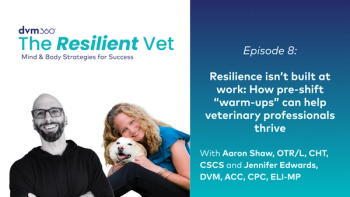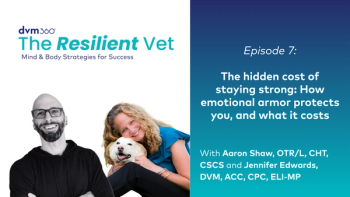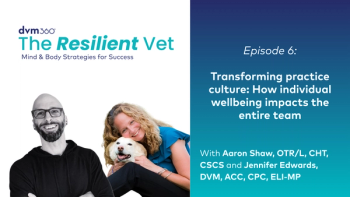
Journal Scan: The risks you dont know can hurt you
Literature show that precaution in the workplace is essential for women of childbearing age.
Shutterstock.com
Why they did it
Over the last several decades, veterinary professionals have become predominantly women, both veterinarians and team members. Additionally, because of the nature of veterinary medicine having many full-service general practices, personnel encounter a wide range of workplace exposures, including chemical, biological and physical hazards. Given that a large portion of the women in the workplace are of childbearing age, a review of risks of these exposures specific to reproduction is timely. The goal of this study was to review the published material and summarize the best practices to mitigate reproductive risks as well as identify current knowledge gaps.
What they did
A systematic literature search and review was performed between July 2012 and January 2016. Articles that described chemical, biological and physical hazards present in the veterinary workplace and associations with adverse reproductive outcomes were reviewed. The search found 122 sources reporting on demographic trends and hazards to female reproductive health including exposure to anesthetic gases, radiation, antineoplastic drugs and reproductive hormones. Demanding work, prolonged standing and zoonotic disease were also identified as hazards to female reproductive health. Relevance to veterinary occupational health and reproductive health were determined as was whether the articles included best practices for prevention, control and mitigation of hazards. Strength of evidence was classified as primary, supportive or anecdotal.
What they found
Demographic data supports that the increasing number of women working in veterinary medicine will result in an increased number of women of reproductive age being exposed to chemical, biological and physical hazards in veterinary practice. Awareness of potential health hazards from chemicals and pharmaceuticals, along with adoption of measures to reduce potential for exposure, are essential to prevent or reduce adverse health events. This can be accomplished through elimination or substitution of the harmful chemical, changes to work practices and use of personal protective equipment. Several studies identified an association between long work hours, prolonged standing at work, or physically demanding work including manual lifting, and preterm delivery or low birth weight for gestational age. A brief summary of findings and recommendations follows.
Chemical hazards
> Antineoplastic drugs and other pharmaceuticals of risk in veterinary medicine are often similar to human health care. Many are carcinogenic, mutagenic or teratogenic and have been associated with reduced fertility, spontaneous abortion and fetal loss. They are identified and listed by the National Institute for Occupational Safety and Health (NIOSH). Minimum precautions include the use of gloves, masks, goggles and long-sleeved, water-resistant gowns. Written instructions for chemotherapy safety and communicating risk and prevention strategies to employees are recommended.
> Reproductive hormones, especially prostaglandins, should be avoided. Meticulous training and care should be provided for their use.
> NIOSH has published recommendations to reduce exposure and risk to anesthetic gasses. Long-term exposure to waste anesthetic gas and adverse reproductive health has not been firmly established.
> The Occupational Safety and Health Administration (OSHA) and NIOSH have published standards and guidelines including how the hazards should be communicated to workers.
> Information on veterinary-specific hazards can be found on American Veterinary Medical Association (AVMA) website.
Biological hazards
> Reproductive and fetal health are acutely susceptible to infectious disease before the risk has been identified.
> Best practices include environmental controls, written infection control policies, consistent application of these policies, staff training in procedures and personal protective equipment.
Physical hazards
> Radiography, standing at work, long working hours, physically demanding work, shift and night work, and needle sticks are all identified as physical risks.
> Best practices for prevention of risk include consistent application of safe workplace practices such as routine dosimetry, lead apparel and habitual workplace safety practices.
> Measures to mitigate certain physical hazards become more important as a pregnancy progresses, including adoption of recommended weight limits for lifting and adjusting work practices to address concerns associated with fatigue, prolonged standing or walking, and working long hours.
> The importance of physical work limits during pregnancy should be discussed starting in veterinary and veterinary technical schools and carried through to employee health practices in clinical settings
Take-home message
Information on reproductive health hazards and minimizing risk, with an emphasis on developing a safety-focused work culture for all personnel, should be introduced and discussed during veterinary and veterinary technician training and integrated into employee training. Early introduction to and familiarity with reproductive health hazards and practical information about mitigating risk, with an emphasis on developing a safety-focused work culture for all veterinary personnel, are critical for making the changes necessary to meet current and future veterinary occupational health challenges.
Link to study:
Scheftel JM, Elchos BL, Rubin CS, et al. Review of hazards to female reproductive health in veterinary practice.J Am Vet Med Assoc 2017;250(8):862-872.
Newsletter
From exam room tips to practice management insights, get trusted veterinary news delivered straight to your inbox—subscribe to dvm360.





